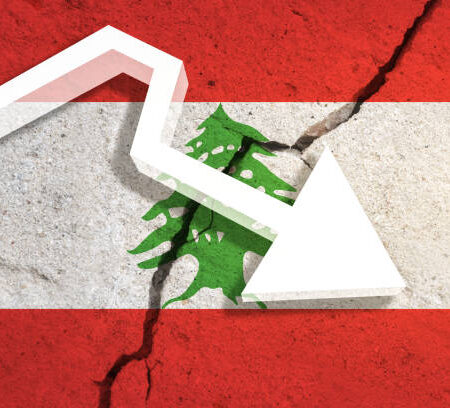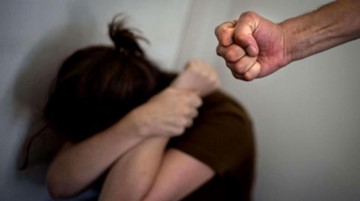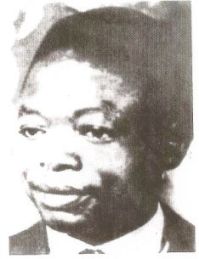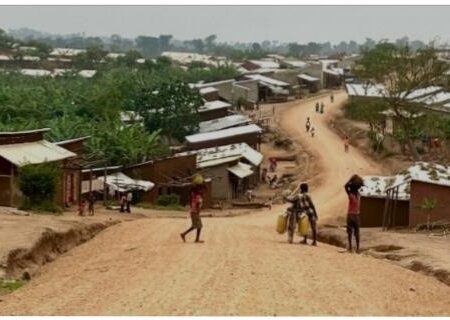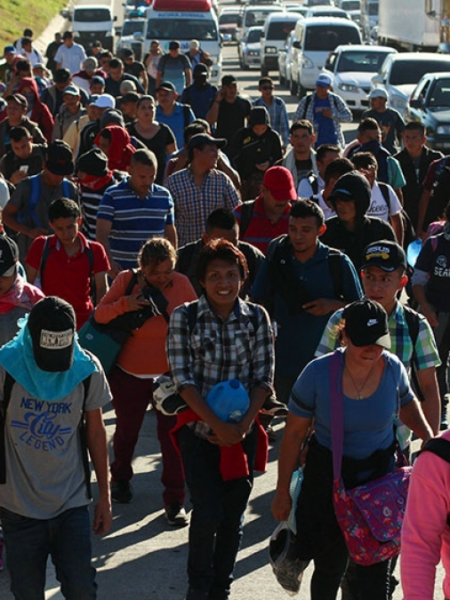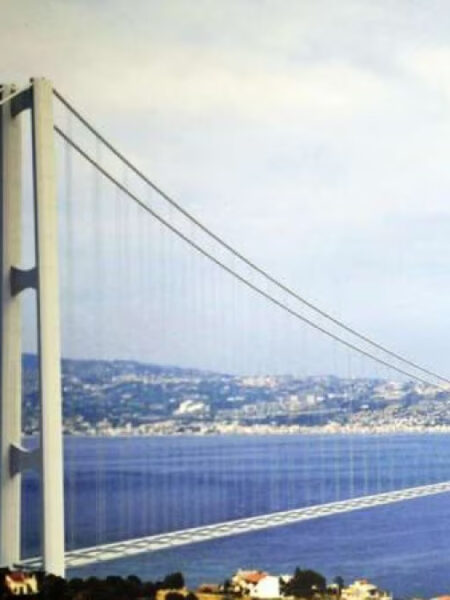Border crossing during COVID-19 pandemic.
Introduction.
In December 2019, a new disease was discovered in a patient in Wuhan, China. It quickly spread outside of the initial contagion zone and soon enough an entire province of China was declared to be in a public health emergency. The virus that caused the disease continued to spread and in a mere month, the entire world was affected. By the Spring of 2020, no countries were left without the presence of the disease. As of now, in Summer-Fall 2021 the disease is still roaming around the world causing numerous economic, public health, and social problems. This is the story of COVID-19.
Under Princeton University’s “Global History Dialogues” program I was asked to conduct a personal oral history project which examined a globally relevant topic connected either literally or figuratively to a “border crossing” theme. This research paper is the result of my work within the program.
As nothing is as relevant as the ongoing COVID-19 pandemic, I decided to examine the current crisis from a perspective of an oral historian. Like any other public health emergency, the coronavirus disease spawned a lot of loss and grief in people around the world. Many died, many more lost families or loved ones. But besides these big losses lesser ones lurked. Millions of people lost their jobs, the anxiety and depression conquered the minds of nearly everyone. In this desperate situation governments of every country tried to step up and ease the predicaments and created policies to do so. But not all policies were created equal. Some of them spawned confusion and irritation among the public, some were too inefficient, some too invasive, while others were accepted unconditionally and made the lives of people better. Obviously, there were policies that did both right and wrong. As a result, some people may have changed their opinion about their government or state, for the worse or for the better.
The goal of this research project is to enrich the framework of quarantine studies with more personal stories of people affected by the pandemic and to record whether the already stressful experience of international border crossing changed under new, more restrictive public health policies. The project answers the question of whether the individual perception of the state and its role in one’s life has changed during a border crossing in the early stages of the COVID-19 pandemic.
To find an answer I conducted four interviews with young people who attempted to cross a border during the pandemic. My research concentrates on the Central Asian region, as all four respondents (Valeria, Tamara, Dipper, and Mason[1]) are young people who come from the countries in this region: Tamara, Valeria, and Mason are citizens of Kazakhstan, while Dipper is a citizen of Tajikistan. They all often cross the land border between their country and Kyrgyzstan, as they all receive education in Bishkek. Thus, they had rich experience of crossing land borders before the start of the pandemic. During the Interviews, I asked them to compare pre-COVID era crossings to their more recent trips that happened in the early months of the pandemic.
Despite the close cultural proximity of Central Asian countries, the diversity in regulations of safety measures created a unique experience for the interviewees. This experience made them question the policies developed by both their homeland and Kyrgyzstan (Dipper, 2021) (Tamara, 2021). The interviewees felt unsafe, they were not comfortable during the crossings (Mason, 2021) (Tamara, 2021). All of them agreed that the measures were intrusive to their freedom, and they noticed the increased influence of the state in their lives (Dipper, 2021) (Valeria, 2021) (Mason, 2021) (Tamara, 2021). But how exactly did their perception of the state change because of crossing a border? This research will try to answer that question.
This project will determine whether the change in perception of the role of the state happened in the group of my interviewees and what could have been the reason for such change. The materials from the interviews were an essential part to determine the validity of the following hypothesis: border crossing in a time of pandemic increases individual’s awareness of the state’s role in their life invoking a more critical evaluation of the state’s actions and policies.
To better understand the current quarantine safety measures that were applied by local governments, readers will be introduced to the history of quarantine in Chapter 1. Then, this study’s exact place in the research framework will be determined in Chapter 2. Chapter 3 will include the narrative composed based on the interviews conducted for this project and a general discussion of the hypothesis will be provided. In Chapter 4 the outcomes of this research will be presented to readers.
Chapter 1. Quarantine: a brief history.
Prevention of the spread of diseases was an actual public health objective since the very beginning of the social life of early humans. An epidemic outbreak could wipe out an entire tribe or bring a city-state to collapse. To combat this isolation of infected people were introduced no later than the 7th century BCE (Bassareo, Melis, Marras, & Calcaterra, 2020). The word “quarantine” was introduced in the 14th century and was produced from the Italian “quarto” which means “forty”. People from infected cities coming to Italian republics were put into isolation on their own ships for forty days (Baldwin, 1999). Quarantine has been an important part of disease spread prevention since the Black Death – the deadliest contagious disease in Eurasian history (Tognotti, 2013). Although doctors in the Medieval era did not know how diseases were transmitted among people, they realized that the need for isolation became apparent. (Gensini, Yacoub, & Conti, 2004). Armed forces of city-states enforced quarantine on travelers and prevented infected from entering the city. Ships were denied entry and put into an isolated location if they embarked from an infected port (Harrison, 2006).
The same strategies were used until the 19th century. Isolation on ships or in special hospitals (called “lazarettos”) often helped to prevent the spread of the disease that harassed the region, but quarantine proved itself powerless against some diseases. The outbreak of cholera in 1830 sabotaged the faith in isolation and border control effectiveness, destroying the perception of quarantine as a universal remedy (Tognotti, 2013).
At the same efforts were made to create an international agreement on solving public health problems and stop the spread of potentially contagious diseases. However, due to political and economic reasons (such as reduction in trade volume during quarantine) and due to differences in public health policies of each nation involved in the debate successful adoption of the European standard for quarantine measures happened only in 1893 (Gensini, Yacoub, & Conti, 2004). Other countries and regions developed their own systems of disease control, but many of them became obsolete due to the influence of the Western world. For instance, in China, the very first system of contagion prevention was developed as early as during the Qin Dynasty period, but in the 19th century, European practices started being adopted as well (Huigang, Xiaowei, Cui, Haixia, & Zhiming, 2020).
These practices were put to the test in 1918 when the Spanish Flu pandemic — the largest disease outbreak of the 20th century —happened. Due to the ongoing First World War, the governments and NGOs failed to effectively apply quarantine measures and border control procedures. A lot of resources were spent on calming the public as global anxiety and panic were rising (Tognotti, 2013). Newspapers reporting the death rate added oil into the fire and society started polarizing with some calling for more restrictions while others refusing to follow the regulation due to confusion and disbelief in safety measures (Baldwin, 1999). Because of that, the quarantine measures showed themselves impotent leading to the outbreak ending a little more than a year later when the majority of infected either died or recovered with acquired immunity (Bassareo, Melis, Marras, & Calcaterra, 2020).
In the late 20th century with the founding of the World Health Organization and progress in medical research influenza epidemics became less damaging to society and quarantine measures such as the closing of public places diminished in quantity (Tognotti, 2013). In the current century, widespread quarantines and travel ban restrictions received a second life with the start of the SARS pandemic in 2003. The epidemic outbreak was contained and the SARS outbreak and response to the danger it imposed became an example for governmental actions on public health emergency on national and international levels (Tognotti, 2013). For instance, during the Ebola pandemic, many states imposed a total ban on travelers coming from countries with many identified cases. It is worth noting that travelers from countries with a weak presence of the disease were hardly affected and only a few restrictions were imposed against them (Poletto C, 2014).
The present COVID-19 pandemic is exceptional on many levels. A seen from the review coronavirus outbreak is the first international public health emergency of great magnitude (unlike SARS and Ebola which were majorly contained in a small number of regions) that invoked a coordinated international response (unlike Black Death and Spanish Flu where most policies were issued on the local level). Interestingly, the measures that are used to stop the contagion in our times originated in the Medieval era and are constantly improving throughout time. However, despite the rich experience of combating diseases, COVID-19 became a huge problem for states around the world.
Chapter 2. Experiencing Quarantine.
The nature of relationships between the state and the public in times of crisis received a big spotlight in the research framework. Particularly, the topic of government response to a public health emergency and the public’s reaction to it was examined by a lot of social science surveys. One of them has found that restrictions imposed by the state during a pandemic are only effective with the presence of strong support from the people (Hilyard, Freimuth, Musa, Kumar, & Quinn, 2010 ). Interviewees of another social science study have shown concern for the lack of opportunity to keep in contact with their families and loved ones. The research concluded that states need to take these factors into consideration to gain support from the public (Robert J. Blendon, Cetron, Benson, Meinhardt, & Pollard, 2006). A more recent piece of research has found a correlation between the current characteristics of the contagious disease and public support for government-imposed sanitary restrictions. For instance, the researchers noted the relationship between the global spread of the disease and people’s support for border control measures (Semra Ozdemir1, Chaudhry, Malhotra, & Finkelstein, 2021). In general, border control procedures receive higher approval from the public than internal, more basic policies (Hilyard, Freimuth, Musa, Kumar, & Quinn, 2010 ). The topic of restrictive measures imposed by the state in time of pandemic was engaged from the perspective of ethics as well. Although quarantine is one of the few effective measures to solve public health problems, making it ethically acceptable has been determined to be a challenge in the modern democratic world (Wynia, 2007). Overall, the topic of state-to-public relationships has received big exposure in social sciences and ethical sciences.
At the same time, not many research projects have concentrated on the experience of individuals who encountered the increased restrictions from the state during a public health emergency. I tried to fill out this insufficiently researched area with this project, capturing and analyzing the stories of people who experienced more stringent control measures during border crossing at the time of the COVID-19 pandemic’s early stages.
Chapter 3. Narrating border crossing.
At the beginning of the pandemic, almost all governments of the world introduced some restrictive measures to slow down the spread of the virus. Nevertheless, different states created a different set of rules, and the dynamic of how closely they followed those laws changed significantly during the pandemic. Tamara, a 20-year-old Kazakhstan resident who crossed from Kyrgyzstan to Kazakhstan in the early months of the pandemic, noted, “In Kyrgyzstan, the government reacted quickly, all citizens stayed at their homes, they were able to request food delivery. The government strictly enforced the mask-wearing regime and people were not allowed to walk on streets without an urgent reason” (Tamara, 2021). At the same time, as she reports, in Kazakhstan the population seemed to be skeptical about the pandemic and “only laughed when they were asked to wear a mask” (Tamara, 2021). Valeria, a sister of Tamara who traveled with her at that time, confirms this point: the government introduced mask-wearing and social distancing, but never regulated it, and people were never punished for the absence of a mask (Valeria, 2021). However, later in the pandemic, the dynamic of enforcement intensity of the mandatory safety measures regulation seemed to become inversed: Kyrgyzstan weakened the grip on the measures, and the people were less limited in their movements and actions, while Kazakhstan started enforcing the laws and follow more closely its own regulation (Tamara, 2021). As Tamara reports about her most recent visit to Kyrgyzstan in January 2021, while in Kazakhstan it was forbidden to walk outside without a mask as one would be stopped by a policeman in case, they did not follow the regulation, in Kyrgyzstan, virtually no one wore masks even in crowded places (Tamara, 2021). As a result, the reaction of the governments on various stages of the pandemic was different and border crossers may have felt themselves as if they traveled between different worlds. At the same time, there were some common grounds among states as they all underdelivered on managing expectations of to-be crossers, as I will show in the next section of the narrative.
The environment around Tamara and Valeria changed significantly: at first, they were in lockdown in Bishkek and were forced to stay and home, but after crossing the border they found themselves in a world that on the surface looked pretty much like it looked before the pandemic began. Then the environment became more limiting again, as Kazakhstan’s government enforced the laws they introduced earlier. For Tamara, the environment changed, again and again, every time she traveled to Bishkek and back; in Kyrgyzstan, she felt unsafe because of the lack of government regulation, but then she returned to Kazakhstan where the safety measures were significantly stricter.
For travelers, the border between countries thus served as a portal between two worlds, because, although the two countries are very close culturally, the public health situation and policy differentiated them apart quite significantly. But what about the «portal» itself? As with any rift between the two dimensions in a fantasy book, the border crossing point between the two countries spawned expectations and sometimes fear among the to-be crossers. But unlike fiction books, the fear and expectations were not about the “world on the other side” but about the crossing procedure itself. Instead of an instantaneous transition to “the new world” the “portal” in form of a land border took several hours, if not days and weeks to overcome. Due to uncertainty created by the government and the lack of information, the interviewees did not fully know what will happen during the crossing. What to expect on the other side? The “portal” spawned a lot of questions, but travelers had to cross it anyway.
Some had expected that there will be no significant difference with the crossings before the pandemic. For example, Mason, who crossed the Tajik-Kyrgyz border in August 2020, expected no slowdowns or problems since he had a relevant negative test for coronavirus presence (PCR test). He believed that since the number of cases in both countries decreased and he had no SARC-COV-2 in his body he was free to cross the border (Mason, 2021). Valeria had quite opposite expectations: she thought that experience at the border would be tough. “We have prepared for a two-week barricade (laughs), to a detachment from the whole world” she remembers (Valeria, 2021). The expectations were based on information from the Kazakh embassy, as officials said that the crossers would be forced to be in isolation for a week to two weeks. However, acquiring this information from the embassy was quite hard, as Valeria’s sister Tamara reported, since the information on the website was outdated and for several days, they did not answer the calls (Tamara, 2021). As a common denominator, the interviewees all agree that the governments of their countries did not do a very good job of creating good access to up-to-date information on border crossing procedures. Sometimes the difficulty and rigor of the procedures described in official sources were exaggerated, as in the case of Valeria’s first and only and Tamara’s first border crossing when they were placed into quarantine for one day instead of 1-2 weeks. Sometimes, however, the requirements for the to-be crossers were stated unclearly, creating false expectations of a possible crossing. That was the case for Tamara’s first attempt to return to Kyrgyzstan and Dipper’s first of his two attempts to do the same. Dipper is a resident of Kazakhstan who visited Kyrgyzstan, where his alma mater is located, in August 2020. According to the data published in the official sources, he should have been able to cross the border in July 2020, but when he tried, he was forced to return home, because the real requirements were different from what he expected based on publicly available sources (Dipper, 2021). It is interesting to note that Dipper has some previous exposure to pandemics different from COVID-19. For example, his trip to China in 2009 was canceled because all Chinese borders were closed due to bird flu pandemic. Despite this experience Dipper did not expect such troubles with the border crossing in Summer 2020, as he relied on information provided by the state, just like he did 11 years ago (Dipper, 2021). But this time, the information was inaccurate. To sum up, creating objective expectations was unreasonably hard for all four of my interviewees. Although the governments tried to help them with preparation for the crossing, it did not stop the unexpected unpleasant experience from happening at the border.
Regardless of expectations, the unpleasant experiences did happen with all four of my interviewees with varying degrees of troublesomeness. In this section of the narrative, I will show the problems they encountered on the borders.
In general, one of the most distressing factors during crossing was fear of the unknown. This is especially true for Tamara, Valeria, and Mason, who were forced to wait for no obvious purpose and then taken to an unknown location by a car that was driven by a driver who had not identified himself. Let me introduce Mason’s story first: after Mason got to the border in the morning he was asked to sit outside and wait for an ambulance to take him and other passers to a hospital to be checked for coronavirus presence. “There was a river, and it was very windy and cold… No shop, no Internet, nothing at all was there. And I was sitting there for, like, 10 hours before the car came” he says with an unpleasant voice. Then in the evening, the ambulance took him to a hospital where he was released since he had a negative PCR test. However, the drive itself was spawning insecurities during the ride: (I saw this as) “a threat, of course, to go somewhere in the dark, with someone unknown. I felt more insecure than safe” Mason remembers (Mason, 2021).
Tamara had a similar experience as she and her sister were taken by ambulance to a hotel where they both waited for PCR test results to came negative. She recalled officials taking away her passport and placing her in a “shabby ambulance car”. “The car driver, a stranger, was driving us somewhere. He declined to show us his ID to confirm he is a medical professional, despite us asking him to. To where we were riding? Was he trying to kidnap us? Was he bringing us to slavery [she chuckles]? In all seriousness, that was very uncomfortable” she describes (Tamara, 2021).
Her sister, Valeria, told the same story but focused her concerns not on the “ride to unknown” but on the fact that her ID was taken away. “Okay, they took us to God-knows-what town. Okay, okay, this can still be comprehended somehow. But passports … It is literally a manipulation. On what ground did they take them from us?” she lambastes. Valeria reports that she also felt unsafe because of that and felt like she was manipulated (Valeria, 2021).
Overall, the states clearly failed to create a safe environment by explaining what to expect in coming hours and by dispelling all uncertainties such as reasons why to take away passports and who and where to drive the ambulances. There definitely was someplace for improvement.
Aside from uncertainty, another huge concern for Tamara, Valeria and Mason were health safety measures. “They put me in a car with others who might be sick, although I certainly was not ill as I had a negative test result. But others could have easily infected me and then the officials would still let me go” Mason points out (Mason, 2021). Valeria continues that thought by saying that these safety measures were mere “security theater” as no real effective health preventive measures were taken. Although she admits that there probably were some other factors that make the officials place her and Tamara into the same room with other potentially sick people, she still is discontent with that decision: “either let people cross the border and deal with them afterward or if you really want to find out at the entrance which of them is sick, put them at least in separate chambers. Well, now I am outraged! This is generally illogical” she notes angrily (Valeria, 2021). Tamara, although less outraged, also pointed out that putting a lot of people in the same room was very concerning, to say the least (Tamara, 2021).
Interesting to note here is the fact that the officials probably still provided security to the society. Even if one of the people in the same room was sick and it was revealed by the PCR test the person submitted, it would have been possible for the state to trace out his/her roommates. The officials might use contact tracing technique that was practiced since Medieval times or even earlier (Baldwin, 1999). Then the officials may put he traced contacts to quarantine. However, none of the interviews mentioned this possible reasoning behind the governmental decision to keep people in “batches”. This fact once again shows that the government failed to properly inform the crossers of the potential risks and ways to avoid or solve the problems those risks may spawn, invoking fear, insecurity, and anger in the people.
At large, the border crossing was the reason for creating unpleasant and concerning experiences for the individuals involved. The atmosphere of going into the unknown as well as debatable health safety measures made my interviewees have bad memories of their trips. Both Valeria and Mason admitted that they avoided crossing any borders ever since to forgo going through all those tribulations again (Valeria, 2021) (Mason, 2021). But their concerns were probably redundant as in several months the border crossing procedure itself had been simplified by means of just presenting a recent PCR test, so no one was escorted to a hospital anymore. However, that did not mean that everything returned to the normality of the pre-COVID era. Another big problem may have been encountered, as could be seen from Tamara’s second, and Dipper’s first and only crossings about which I will tell in the next section.
Dipper and Tamara were traveling together to get from Kazakhstan to Kyrgyzstan where their university was located. Dipper planned to go there in early summer, but at that time the restrictive measures were too strong, so he postponed the trip to late July (Dipper, 2021). He and Tamara learned from the public media and the government website that certain groups of people, including students returning to their universities, were allowed to cross the border. But when they came to the border they were denied entry, or, more specifically, denied exit, since local Kazakhstani border control employees stopped them at the entry point and told them that they have a list with full names of people who are allowed to exit and that Tamara and Dipper are not among the predetermined list of people (Tamara, 2021) (Dipper, 2021). “We get to the border quite late in the day, so we figured out that if we decided to go back to our hometown, it would take too much time. So, we decided to stay at some hotel at the border and try again tomorrow. And let me say, that was a bad experience, to say the least”, Dipper remembers (Dipper, 2021). “The block post was in 12 kilometers from Bishkek, so it was very disappointing to be able to see Bishkek but be unable to get to it. It was a traumatic experience, to be honest”, says Tamara (Tamara, 2021). Eventually, in several weeks they repeated the attempt and this time it was successful. No long waits or turnarounds at the border, PCR test, and a student ID were enough to convince the border control to allow entry. But the experience was not easy on the mental health, as Tamara put it: “I lost half of the nerve cells that are given to me for my entire life in the span of a couple of days” (Tamara, 2021). So, despite the waits and ambulances were not used anymore, the new restrictive measures also contributed to creating unsafe or depressing feelings among the passers.
Later in the pandemic, the lists of people allowed to enter were also abandoned and only PCR tests remained as an additional requirement to the usual pre-pandemic set of documents (Tamara, 2021). The first several months of the pandemic created a unique experience for all my interviews not necessarily positive, quite the opposite. In the next section, I will discuss their reactions to the experience and their thoughts on both idea and execution of the safety measures.
In general, all crossings experienced by the interviewees were far from pleasant. The perception of the governmental actions was quite different, though, with some calling them “necessary evil” while others criticizing them for inefficiency. For example, as was mentioned earlier, Valeria sees his temporary isolation as security theater, because people were not really isolated, but rather just put together waiting for the result of the test. “They look at China, where everyone was simply locked up and they say: ‘Okay, guys, we will not introduce all measures, but only a few.’ But excuse me, either lock people at home or do not restrict them at all, because what is the point?” she comments (Valeria, 2021). Mason, on the other hand, keeps a more moderate position: he thinks that the idea of taking those who are potentially ill to a hospital from the border is great, but it is illogical to do the same for people with a negative PCR test (Mason, 2021). Dipper thinks that these kinds of border restrictions (i.e., allowing only certain people to enter or requesting the exact type of vaccine from travelers) are political plays to pursue some agenda (Dipper, 2021). Tamara, although also criticized the execution of the idea, in contrary to all others, positively commented on these additional restrictions, saying, for example, that she was pleased to see that the state cared for her, providing free PCR test and free accommodation for the period of isolation. Also, she pointed out that nobody made her cross the border, so if she disagreed with the safety restrictions, she could have just waited until they were lifted. “When I was coming back to Kazakhstan in May all measures taken by the government were quite expectable, so it really just was ‘either cross on our terms, or if you disagree with them, don’t cross at all. And I agreed to those terms, so I am not really in the place to criticize the state”, she argued (Tamara, 2021). Overall, the negative experience spawned different reactions among the people I interviewed.
As can be seen, the level of support of governmental actions varied among the respondents. Yet, the cornerstone question of the interview, “Did your instance of border crossing change your perception of state’s role in your life? “, received the same answer from all four interviewees. All of them noticed that before the pandemic and the border crossing, the state was playing a role somewhere in the background of their lives, as Mason said, “they were building some stuff around the city I live in, introduce some laws and restrictions, but they did not really influence my life much” (Mason, 2021). Nobody felt discriminated by the state, noticed some disruptive restrictions on their lives. As Valeria described “State is healthcare, education, school… It’s something that exists but you don’t feel its presence every day” (Valeria, 2021). However, after the start of the pandemic and after the border crossing this invisible entity in the background “made its influence felt by greater restrictions introduced to our life” (Valeria, 2021). Tamara added that before the pandemic she did not realize how close is the cooperation between the state and the people. Her instances of border-crossing “demonstrated that the state really exists” (Tamara, 2021). Mason described that during the waiting at the border he realized that he was not as strong as he thought he was, and that the government has greater influence than he had believed before (Mason, 2021). Dipper, although mentioned that the state used its power to restrict some of his plans, generally he acknowledged that this increased state’s role that it has after the start of the pandemic does not bother him much (Dipper, 2021).
At the same time, Valeria and Tamara admitted that before I asking them these questions, they never really put a thought to the increased role of the state in their lives after the crossing. They said that in retrospect they felt the increased presence, but before the interview, they mostly saw it as a norm during these strange times, and the state’s role did not entertain their thoughts a lot. An example of this point of view we can see in Valeria’s interview: “You know, at that moment I didn’t think about it (her evaluation of safety measures at the border) at all. That is, I just wanted to get home and cross the border… Now (after you asked about it) I think like, really, what kind of nonsense is this…” (Valeria, 2021). Tamara agreed that at the time of the crossing she only thought about getting to the other side and avoided thinking about what government can and cannot do, and do it have a right to act like that (Tamara, 2021). This leads me to the conclusion that although the state’s presence in one’s life subjectively increased, some respondents did not realize it, until they were prompted to inquire into the topic.
Additionally, all respondents agreed that after the end of the pandemic they expect the state’s role in their life to return to normal, as all restrictive measures would be either lifted or diminished. As Valeria put it, a “person is a creature that adapts very quickly to changes”, if the coronavirus pandemic ends and the emergency laws are removed, people will quickly adapt and will stop noticing the state again (Valeria, 2021). These opinions will help us to answer the research question and to determine the validity of my hypothesis. Let us proceed to the final chapter.
Chapter 4. Analysis and conclusions.
My interviewees had diverse stories of their border crossing experience and different opinion about governmental policies. However, the interviews gave out a clear answer to my research question. It was “Does the individual perception of state and its role in one’s life have changed during a border crossing in early stages of COVID-19 pandemic”. The answer given was yes, it does change the perception of the state. The respondents’ answers showed that they started feeling the weight of the state’s presence more and felt that the government influences their life stronger than ever. This fits with the first part of my hypothesis, namely that border crossing in a time of pandemic increases individual’s awareness of the state’s role in their life. At the same time, the change seems to be temporary. Although a follow-up study would be required to interview people in the post-pandemic period and scrutinize their answers about the state’s role after the COVID-19 pandemic ends, according to the expectations of the respondents to my interview the state’s role will once again decrease after the stricter measures will be lifted.
The second part of my hypothesis seems to be false. The border crossing during the pandemic did not invoke more critical evaluation of the state’s actions and policies in two of my interviewees and the other two find it difficult to answer. All four of them agree that the actions taken by their states were not ideal, and the execution of directives might have been better, but it did not make them approach future actions and policies from a more critical point of view. The possible vector of exploration for future researchers might be a search of correlation between personal political views and the degree of increase of the critical evaluation of state’s actions after the border crossing.
As an indirect result, this research piece has found out that prior to the COVID-19 outbreak exposure to epidemics or pandemics in the Central Asian region was limited. Dipper, the only interviewee who has previous experience with epidemics, messed the names and the dates of both epidemics he encountered (Dipper, 2021), while others were unable to remember any epidemics aside from those which are taught in school. This may imply that states did a poor job at preparing the population for a future possible epidemic outbreak, although more research is needed in this area.
Through the long history of combating pathogens, humanity has developed many different methods of stopping contagious outbreaks. Since the start of the modern era quarantine and isolation measures became some of the main weapons against the pathogen. The state started imposing these measures, despite often the public met these new policies with resistance and distrust. As my research paper discovered, the border crossing restrictions invoked an increase in people’s awareness of the state’s role in their life, though this increase might be only retrospective and temporal. Some future research is needed to bring light to these topics.
References
Primary sources
Dipper. (2021, June 13, Taraz, Kazakhstan). Interview #4. (Duration: 49:59) (P. Ges, Interviewer)
Mason. (2021, May 30, Dushanbe, Tajikistan). Interview #2. (Duration: 37:51) (P. Ges, Interviewer)
Tamara. (2021, June 10, Taraz, Kazakhstan). Interview #3. (Duration: 53:35) (P. Ges, Interviewer)
Valeria. (2021, May 29, Voronezh, Russia). Interview #1. (Duration: 49:03) (P. Ges, Interviewer)
Secondary sources
Baldwin, P. (1999). Contagion and the state in Europe, 1830–1930. Cambridge: Cambridge University Press.
Bassareo, P. P., Melis, M. R., Marras, S., & Calcaterra, G. (2020). Learning from the past in the COVID-19 era: rediscovery of quarantine, previous pandemics, origin of hospitals and national healthcare systems, and ethics in medicine. Postgraduate Medical Journal, 96(1140): 633-638.
Gensini, G., Yacoub, M., & Conti, A. (2004). The concept of quarantine in history: from plague to SARS. The Journal of Infection, 49(4), 257-261.
Harrison, M. (2006). Disease, diplomacy and international commerce: the origins of international sanitary regulation in the nineteenth century. Journal of Global History, 1(2), 197-217.
Hilyard, K. M., Freimuth, V. S., Musa, D., Kumar, 0. S., & Quinn, S. C. (2010 ). The Vagaries Of Public Support For Government Actions In Case Of A Pandemic. Heakth Affairs, 29(12): 2294–2301.
Huigang, L., Xiaowei, X., Cui, H., Haixia, M., & Zhiming, Y. (2020). A brief history of the development of infectious disease prevention, control, and biosafety programs in China. Journal of Biosafety and Biosecurity, 2(1): 23-26.
Poletto C, G. M. (2014). Assessing the impact of travel restrictions on international spread of the 2014 West African Ebola epidemic. Euro Surveill., 19(42).
Robert J. Blendon, C. M., Cetron, M. S., Benson, J. M., Meinhardt, T., & Pollard, W. (2006). Attitudes Toward The Use Of Quarantine In A Public Health Emergency In Four Countries. Health Affairs, 25(2): 15-25.
Semra Ozdemir1, 2. ·., Chaudhry, I., Malhotra, C., & Finkelstein, E. A. (2021). Public Preferences for Government Response Policies on Outbreak Control. Patient-Centered Outcomes Research, 14: 347–358.
Tognotti, E. (2013). Lessons from the History of Quarantine, from Plague to Influenza A. Emerging Infectious Diseases, 19(2): 254-259.
Wynia, M. K. (2007). Ethics and Public Health Emergencies: Restrictions on Liberty. The American Journal of Bioethics, 7(2): 1-5.
[1] The names of the last two interviewees are changed as they both asked for anonymity.

